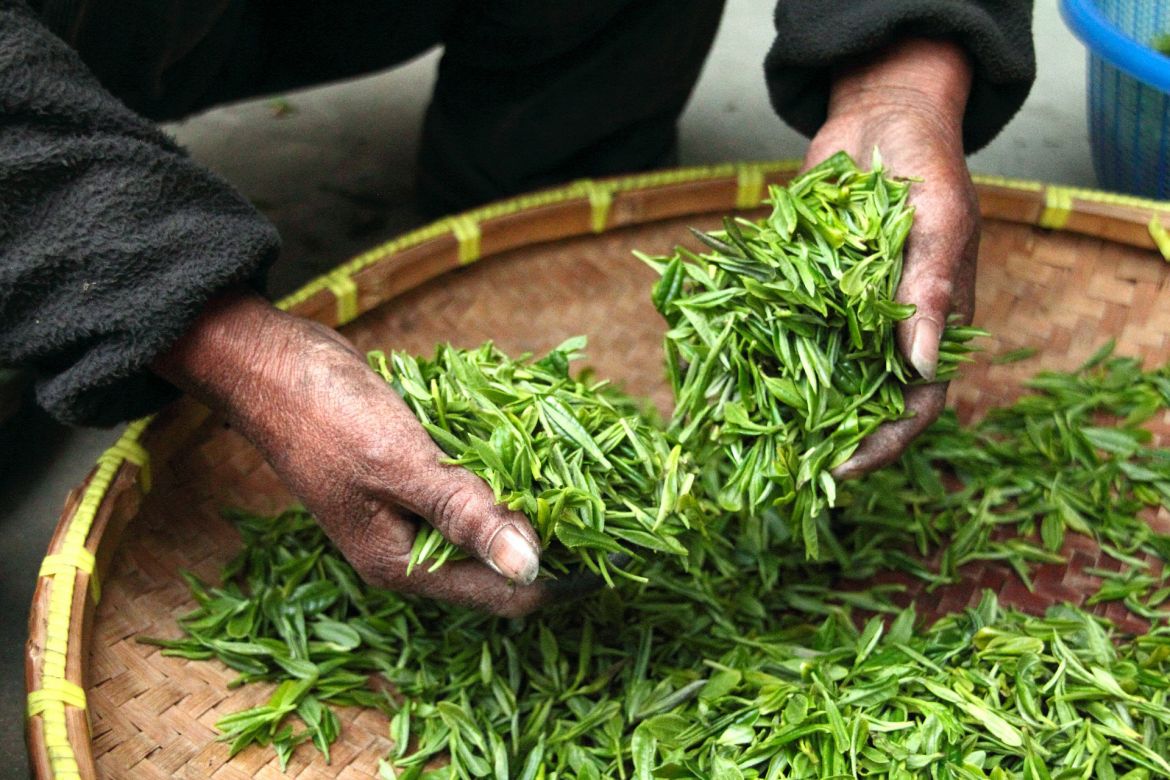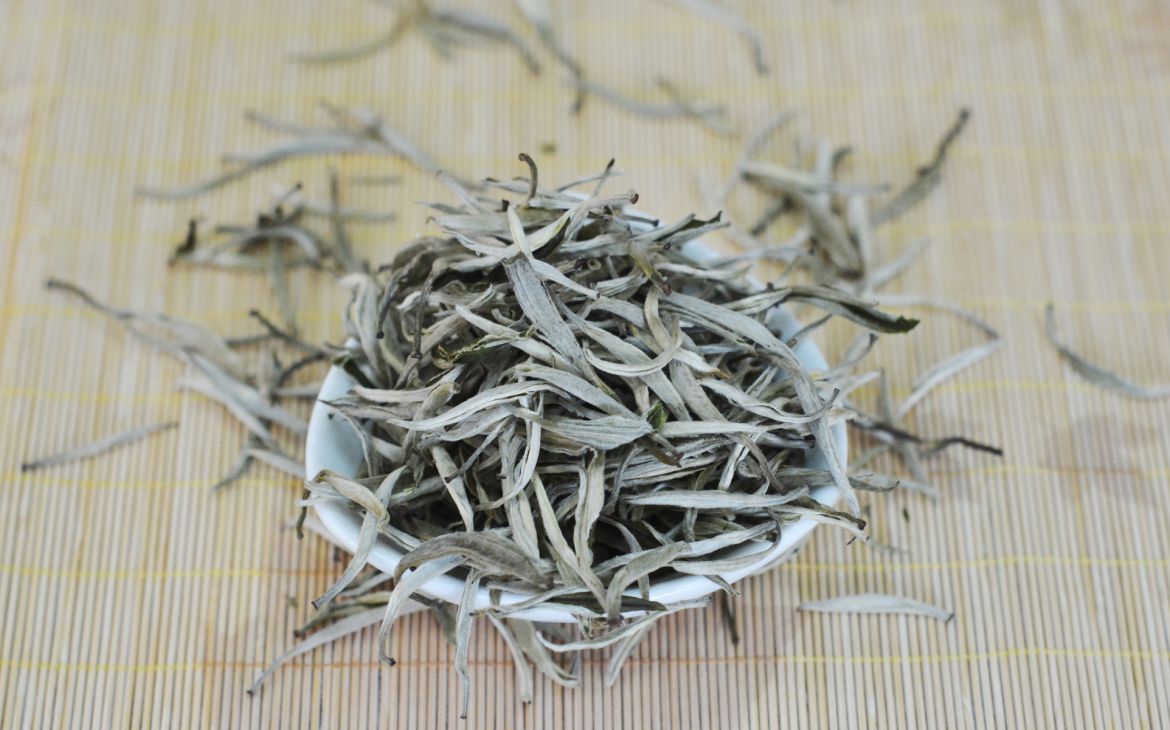Discover White Teas

Spring is in the air, and prestigious tea gardens across the globe are now preparing their short white tea harvest. The enigmatic tea is only produced at this time, meaning the short harvest window is abuzz with activity. But why is white tea such a prized, often highly priced, luxury tea? Let's find out!
What is White Tea?
White tea, as with all true teas, comes from the Camellia sinensis plant. It is the time of harvest and the production process that determines whether the tea becomes white, black or green. Originally, white tea was named after the very fine silvery-white hairs that cover the leaf bud as it develops. White Tea is regarded as one of the rarest and most prized of all teas. It is the least and most carefully processed of all the teas and picked in spring, where only the youngest leaves and silvery buds are selected to create a sweet, dewy flavour.
The tea leaves are picked, gently laid out to wither and then expertly dried. This simplicity, however, takes great skill and subtlety from the tea master to create a truly balanced and nuanced tea. The most prized and celebrated of the white teas are Silver Needle and White Peony, not only for the rareness and subtle flavours but also for their health benefits.
The key to white tea production is a patiently slow yet minimal withering and drying stages, which allows for a hint of oxidisation, preserving flavour and form of the tea leaves. The leaves are moved directly to the drying step, which is done gently and under carefully controlled conditions either naturally (by air or sun) or mechanically (by a hot air machine). White tea undergoes fewer steps than any other tea including Green, Oolong and Black teas.

White Tea – Potted History
It's not precisely known when white tea was first picked, produced and drunk. It is believed that it originated during the Song Dynasty (960 – 1269 AD) in Imperial China, yet even earlier accounts of its consumption have surfaced from the Tang Dynasty (918 – 907). Regardless of the provenance of white tea, history suggests that royalty and emperors only drank white tea as a ceremonial fine tea. Just the first buds and two leaves were delicately picked to make these 'tribute' teas symbolising honour and respect.
Benefits of White Tea
All teas contain antioxidants, which help to fight free radicals and support the immune system, yet white tea is the most powerful. Because it goes through minimal interference in its production, it loses the least amount of its beneficial properties. White tea is the purest teas you can drink, and it's full of polyphenols which act as antioxidants inside the body which fight against free radicals. It has been linked to, and some experts suggest that white tea can help to reverse skin damage caused by diet, stress and sun. Scientists are discovering that white tea can help to reduce the risk of heart disease, reduce bad cholesterol, aid weight loss and benefit oral hygiene.
Is White Tea Really White?
White tea isn't really white in colour at all. It has a subtle creamy yellow tone when brewed. We believe that 'white' actually refers to the fine silvery-white 'fluff' found mostly on the underside of the tea plant's youngest buds.
White Tea Flavour
White tea is light, delicate and subtle and is the perfect introduction to the world of fine Chinese teas. It has a sweet, almost honeyed taste and aroma that is subtly fresh and enticing. White tea has other nuances too, such as grassy, floral, fruity or herby, which are attributed to how and when the leaves were picked. Our organic Pai Mu Tan, also known as White Peony, is of the highest quality and has a sweet aroma of freshness and light spice with a bright, golden-yellow cup. Our customers love it; just read our reviews! Another, perhaps rarer white tea, is our organic loose-leaf Silver Needle with strikingly large, bright and silvery needle-like leaves. Picked with just two leaves and the bud it develops a full flavoured taste with a soft, yet fruity touch and lovely flowery finish.

Here we've selected our favourite white teas which we know that you will love!
Pai Mu Tan Organic Tea
Our organic loose leaf Pai Mu Tan is also known as White Peony white tea. The classic white tea is delightfully fragrant, flowery and aromatic. It is hand-crafted after spring harvest and grown in a tea garden in Qingshan situated in a high altitude of around 750m. Only the youngest buds with two fresh tea leaves are picked, and through the process, the leaves curl around the bud with the soft silvery undersides creating the impression of fluff. Organic Pai Mu Tan (White Peony) is a superior tea that is delicate and aromatic and precisely what you would expect from a white tea. Our customers say, "The wonderful thing about this tea is that I can have it two ways. Light & golden for a refreshing drink or a well-brewed extra strong for those times when I'm harkening after something with more of a kick."
https://www.cupoftea.co.uk/pai-mu-tan-organic-100g/p529
Silver Needle Organic Tea
An exceptionally high-quality Chinese Yin Zhen Silver Needle white tea with gentle, stunning floral notes. The leaves are twisted and shaped into long silvery needles by hand, and Yin Zhen literally translates to Silver Needle. Our organic Silver Needle is carefully produced using only the freshest unopened buds of the Pai Hao tea plant. This white tea is harvested in just two spring days of the year and grown in the mountainous landscape at an altitude of around 750m above sea level. This unique climate gives the white tea a blossom-like fragrance, almost sweet flavour that offers an extraordinary drinking experience and a light-green cup. Our customers say, "I have been drinking this tea for some time now and have never been disappointed. It has become a regular feature in my tea drawer. Full of interesting flavours and aroma."
https://www.cupoftea.co.uk/silver-needle-organic-white-tea-100g/p390
White Yunnan Moonlight Dongzhai Organic Tea
Our White Yunnan is a first-grade white tea. 'Dongzhai' refers to the unusual look of this outstanding tea. The impressive dark leaves are reminiscent of a night's sky while the light velvety texture of the leaf reflects the moon. The leaves are predominantly large, and the buds show an abundance of fluffy, silvery-white 'pekoe'. This exquisite organic Chinese white tea is grown in Dongzhai situated amongst the Wuliang mountains at an altitude of 1500m. The white tea offers lovely floral notes with hints of cocoa that is soft on the palate with a fragrant, sweet and aromatic finish. The unique taste has delicate fruity notes and offers a golden yellow cup. Our customers say, "I've bought this several times for my dad, and he insists that it's the best white tea around!"
https://www.cupoftea.co.uk/white-yunnan-moonlight-dongzhai-organic-100g/p1604
How to Brew the Perfect White Tea
White tea should be made with loose leaves to appreciate the delicate flavours and the dazzling silver buds and leaves. The tea will be much more flavoursome if the leaves are brewed with filtered water at around 80c. The delicate character of white tea can easily be lost if the leaves are infused with water that is too hot.
Because of the fluffy, airy nature of modern white teas, a large heaped teaspoon of leaves per cup should be used. White tea is also suitable for repeat infusing of up to three times. The first infusion should be the shortest of around 90 seconds and can extend up to 2-3 minutes for the final steeping.

• Boil fresh water and leave to cool slightly.
• Place your white tea in a tea strainer or infuser
• Pour the freshly cooled hot water over the tea
• Steep the tea for the appropriate amount of time
• Strain the tea
• Sit back, relax and enjoy!
-
Posted by cup of tea admin
16th April 2020












 EARN POINTS WITH OUR LOYALTY SCHEME
EARN POINTS WITH OUR LOYALTY SCHEME